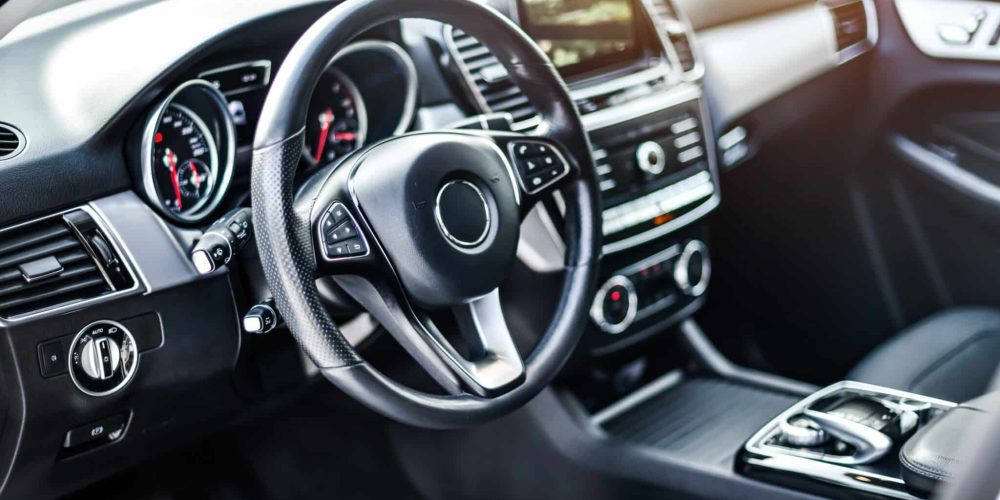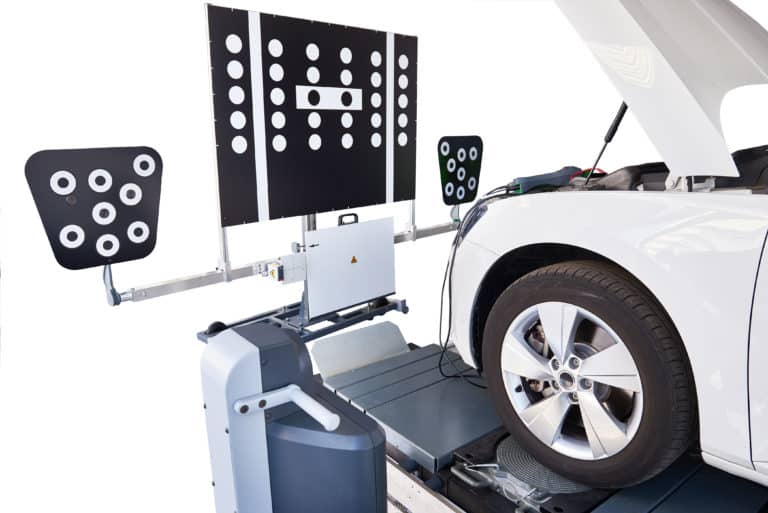Automatic Emergency Steering (AES) is an advanced driver assistance system (ADAS) designed to improve vehicle safety by providing additional steering support in emergency situations. Think of a time you were driving on the highway and suddenly had to swerve to avoid an object on the road or when a car abruptly cut in front of you. In these unexpected scenarios, AES can help keep you and your passengers safe by taking control of the steering and guiding the vehicle away from potential collisions. Below, we will discuss how AES works and what drivers can expect from this technology.
What is Automatic Emergency Steering (AES)
Automatic Emergency Steering is an active safety feature in many modern vehicles with advanced driver assistance systems. It uses sensors to detect potential hazards on the road in front of the vehicle. These hazards can include other cars, pedestrians, cyclists, and obstacles such as debris or animals. When a potential collision is detected, AES quickly assesses the situation and determines the best course of action to avoid the obstacle. This can include steering the vehicle away from the hazard or implementing Automatic Emergency Braking (AEB) to slow down the vehicle and reduce the impact of a potential collision.
How Does AES Work?
At its core, AES uses electronic systems to analyze data from various sensors and make split-second decisions in emergencies. These sensors can include radar, cameras, LiDAR (light detection and ranging), and ultrasonic sensors. The combined information from these sensors is processed by a central computer system that calculates the safest maneuver for the vehicle based on its speed, direction, and surroundings.
Here is a breakdown of the steps involved in Automatic Emergency Steering Systems:
- Detection: Sensors and cameras continuously monitor the vehicle’s surroundings to detect potential obstacles or hazardous conditions.
- Assessment: The ECU uses data from the sensors and cameras to evaluate the proximity, speed, and trajectory of detected objects relative to the vehicle.
- Decision: If the system determines that a collision is imminent and cannot be avoided by braking alone, it starts an automatic steering maneuver.
- Action: The steering actuator receives signals from the ECU to adjust the steering angle. The vehicle is steered away from the threat while considering the safety of maneuvers to prevent additional risks (like steering into opposite lanes or off the road).
- Notification: During and after the intervention, the driver is typically alerted through visual and auditory warnings. The system may also prompt the driver to take control.
The integration of sensors, cameras, and computer systems allows for quick and precise decision-making in emergency situations. These systems rely on advanced algorithms and machine learning to constantly improve their performance.
The Benefits of Automatic Emergency Steering
Automatic Emergency Steering (AES) systems aim to avoid or mitigate collisions, improving vehicle safety for drivers and passengers. Here are some key benefits of this technology:
Enhanced Collision Avoidance:
AES systems are particularly effective in scenarios where braking alone cannot avoid a collision. By adding the capability to autonomously steer the vehicle, AES expands the range of situations where accidents can be prevented. For example, if a vehicle suddenly stops in front of a fast-moving car and there isn’t enough space to brake, Automatic Emergency Steering can steer the vehicle around the obstacle, potentially avoiding a crash altogether.
Increased Reaction Time
Human reaction times can vary and may not always be quick enough to handle sudden road hazards. AES systems continuously monitor the vehicle’s surroundings with high-speed sensors and cameras, which allow them to react almost instantaneously to threats. This quick response can be lifesaving, especially when every millisecond counts.
Improved Safety in Complex Driving Environments
In complex driving environments where roads can be unpredictable and populated with pedestrians, cyclists, and other vehicles, AES systems can step in to assist drivers. In these situations, Automatic Emergency Steering can quickly maneuver the vehicle away from sudden unforeseen obstacles, like a pedestrian stepping out from between parked cars.
Integration with Other Safety Features
In order to maximize road safety, Automatic Emergency Steering works in conjunction with other safety systems like Automatic Emergency Braking (AEB) and Anti-Lock Braking Systems (ABS). This partnership creates a complete safety system that increases the vehicle’s ability to deal with emergencies. For example, AES can steer the vehicle into a safer position while AEB applies the brakes to reduce the impact speed, minimizing the risks and consequences of a collision.
While Automatic Emergency Steering systems provide a safety net for drivers, remember that they are not meant to replace human drivers. Always remain vigilant and attentive while driving, even when these advanced safety features are active.
The Future of Automatic Emergency Steering
The future of Automatic Emergency Steering (AES) is tied to the evolution of semi-autonomous and fully autonomous vehicles. In fact, many automakers are already incorporating AES into their autonomous vehicle prototypes.
Here is what we can expect to see in the future of AES:
Integration in Autonomous Driving Levels: As vehicles progress through the different levels of autonomy—from Level 2 (partial automation) to Level 5 (full automation)—the role of AES will expand. AES will function as part of a broader group of sensors and decision-making algorithms that handle all aspects of driving, from navigation to obstacle avoidance.
Advancements in Sensor Technology
Future advancements in sensor technology, such as improved radar, LiDAR, and cameras, will enhance the accuracy with which AES systems can detect and respond to hazards.
V2X Communication
Vehicle-to-everything (V2X) communication will enhance AES by allowing vehicles to communicate with each other and with road infrastructure. This communication will provide automatic emergency steering systems with additional data, such as the intentions and positions of nearby vehicles.
Ultimately, as tech companies and automakers continue to invest in the development of autonomous vehicles, we can expect to see automatic emergency steering systems become more sophisticated and widespread.
Challenges and Considerations of AES
While the future of AES is promising, there are still challenges and considerations that need to be addressed:
Automatic emergency steering systems rely heavily on sensors such as cameras, radar, and LiDAR to function properly. These sensors can face limitations under certain conditions:
- Bad Weather Conditions: Heavy rain, fog, or snow can impair sensors’ ability to detect obstacles accurately, leading to false positives or missed detections.
Additionally, AES must make complex decisions in real time, which can be challenging in unpredictable or ambiguous driving scenarios:
- Ambiguous Situations: Situations involving pedestrians darting into the road or objects falling from vehicles can present complex scenarios for AES to interpret and react appropriately.
- Interaction with Human Drivers: AES systems must also predict and adapt to the actions of human drivers, which can be unpredictable.
There are also some ethical and legal questions that arise with AES systems:
- Decision Ethics: In unavoidable collision scenarios, the system might need to make decisions to minimize harm. These decisions involve complex ethical considerations that need to be encoded into algorithms.
- Liability: Determining liability (whether it falls on the manufacturer, the vehicle owner, or the software developer) in the event of a failure or if the system’s decision results in an accident can be complicated.
Developers and regulators are actively researching and addressing these limitations. In the future, we can expect to see improved sensors, more reliable decision-making algorithms, and clear regulations surrounding the liability of AES systems.
Start Your Own ADAS Sensor Calibration Center
If you are interested in learning more about automatic emergency steering and other advanced driver assistance systems, you may want to consider starting your own ADAS sensor calibration center. With the increasing demand for these technologies, there is a growing need for trained professionals who can properly calibrate them. At Car ADAS, we offer an ADAS calibration center turnkey package that includes all the necessary equipment, software, and training to start your own business in this industry. Contact us today to learn more!







